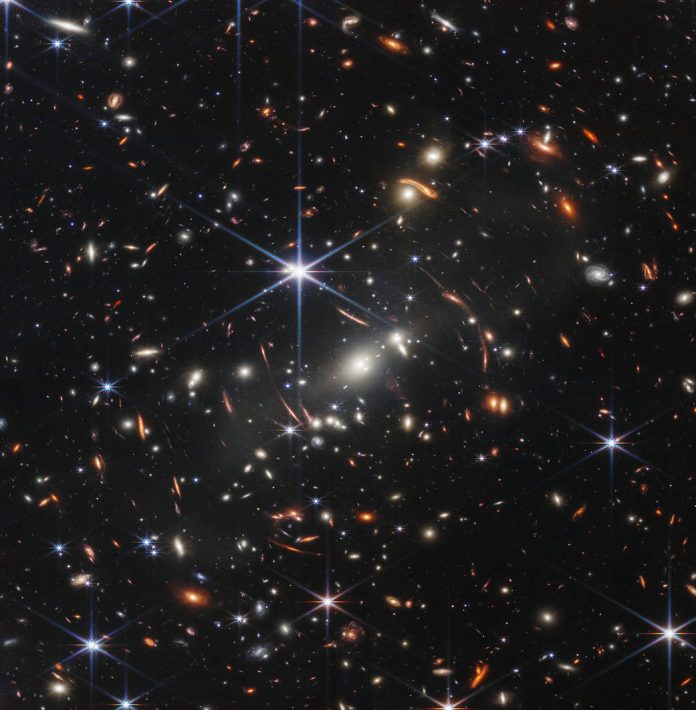NASA has released the first official image from its current large-scale project, the James Webb Space Telescope – enabling America to “go places no one has ever gone before”
The image showcases just how powerful the telescope will be once fully operational. Stationed around 1.5 million kilometres from the planet in the direction opposite to the sun, the telescope will be saving fuel by being stationed at L2 whilst also observing the sky without the light or heat from the sun, earth, or moon interfering.
In a public event at the White House, President Biden unveiled the picture stating that “these images are going to remind the world that America can do big things, and remind the American people — especially our children — that there’s nothing beyond our capacity,” said President Biden in remarks during the event. “We can see possibilities no one has ever seen before. We can go places no one has ever gone before.”
What does the image reveal?
The detailed image is our first full-colour look at thousands of galaxies including the faintest objects ever observed in the infrared.
“Webb’s First Deep Field is not only the first full-colour image from the James Webb Space Telescope, it’s the deepest and sharpest infrared image of the distant universe, so far. This image covers a patch of sky approximately the size of a grain of sand held at arm’s length. It’s just a tiny sliver of the vast universe,” stated NASA Administrator Bill Nelson.
“Webb is just the start of what we can accomplish in the future when we work together for the benefit of humanity.” – NASA Administrator Bill Nelson
Viewing the universe: What can we expect from the James Webb Space Telescope?
“Scientists are thrilled that Webb is alive and as powerful as we hoped, far beyond Hubble, and that it survived all hazards to be our golden eye in the sky,” says John Mather, Webb senior project scientist at NASA’s Goddard Space Flight Center in Greenbelt, Maryland.
“What happened after the big bang? How did the expanding universe cool down and make black holes and galaxies and stars and planets and people? Astronomers see everything twice: first with pictures, and then with imagination and calculation. But there’s something out there that we’ve never imagined, and I will be as amazed as you are when we find it.”
According to NASA, Webb’s mission over the next few years will focus on four main areas: first light in the universe, assembly of galaxies in the early universe, birth of stars and protoplanetary systems and planets (including the origins of life.)
Behind-the-scenes controversy concerning the James Webb Space Telescope
Since the telescope was revealed, academics have been petitioning NASA to rename the world-renowned telescope, given the historical connection between Webb and anti-LGBT policies.
The $10 billion dollar telescope is named in tribute to James Webb, the second administrator of Nasa. Webb led the space agency during many of the Apollo missions in the 1960s and also served as the US undersecretary of state from 1949 to 1952.
According to research in the guardian, during Webb’s time as administrator, Nasa employee Clifford Norton was fired in 1963 for “immoral, indecent, and disgraceful conduct” after being interrogated on suspicion of homosexuality.
Although holding a significant amount of admiration and respect in history books, many think it is disrespectful to the LGBT community to name this new and futuristic telescope after a man who was rumoured to support rather backwards beliefs.
Only time will tell whether NASA will choose to rename the telescope – in the meantime, we can enjoy the stunning images we can expect to see from it over the coming months.
Learn more about this deep field image: https://www.nasa.gov/image-feature/goddard/2022/nasa-s-webb-delivers-deepest-infrared-image-of-universe-yet/











